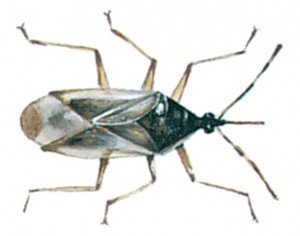
( Latin: Anthocoris nemorum )
These are common bugs normally seen outdoors on trees and bushes, where they live by seizing aphids, mites and other small invertebrates, from which they suck the body fluids. They are often seen when one is picking fruit or they may be taken indoors on cut flowers.
The proboscis is long and thin and the insect often bites humans. In many cases the bite is quite painful but normally there are no after-effects.
Latest posts by Henri Mourier (see all)




